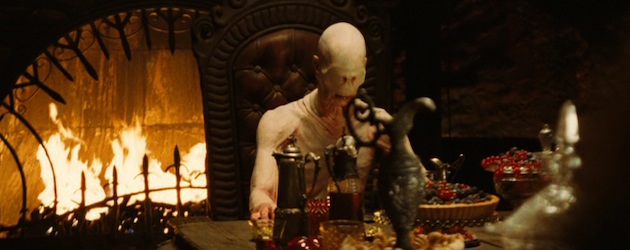Eugenio Caballero

But it was a huge construction film, and I worked with a Thai art director and he brought a fantastic local crew. I was especially impressed by the craftsmanship of the sculptors on everything that was custom-made and hand-crafted. You see all those skills in Thai culture as well as in Mexican culture. I try to work with local crews –there are always beautiful surprises.
AS: Do you still do films in Mexico?
EC: It all depends on the project. The last film I did here was Rudo y Cursi, with Gael García Bernal and Diego Luna, which was very fun to do. After that I just went from project to project and it just so happened that the next projects were not here. And my previous film, the Impossible, went on for a very long time. It was a long process of research, scouting and shooting.
AS: How long did you shoot?
EC: We shot 24 weeks. But it was divided because we shot in Spain and in Thailand. We shot in Spain first, using the huge water tank in Alicante.
AS: Underwater shots?
EC: Mostly on the surface of the water. And then we shot our principal photography in Thailand. After that we had some more weeks of technical shooting back in the tank in Alicante. Which was very interesting, working with miniatures of a set that we had built in Thailand. We did a lot of tests with waves. The film is based on a real story that happened during the tsunami of 2004. It’s a family story. It was very challenging.
AS: Was that a Spanish director?
EC: Yes, Juan Antonio Bayona, a very young, talented director. He did the Orphanage. But this film is completely in another register, it’s more of a drama. We built a lot, we dressed a lot of locations, but for me the most beautiful piece of design was a tree that we had to build in the middle of a scene of devastation. I always love the challenge of recreating nature with our tools as designers. Sculptors are always involved. It’s like making a Frankenstein out of different things: live plants, branches, a lot of sculpture, strong structure… Recreating nature is one of the most difficult tasks in our craft but if you are able to do it, it gives you a lot of freedom to design. You can really push the boundaries.
AS: Was the tree in Pan’s Labyrinth also a build?
EC: Everything in Pan’s Labyrinth was a build. We always intended to build the tree because we wanted a very specific shape, reminiscent of the creature. The tree is shaped like the horns of Pan. The film is full of those connections between the real world and the fantasy world. This suggests to the audience that the fantasy world is created by her imagination, as an escape from reality.